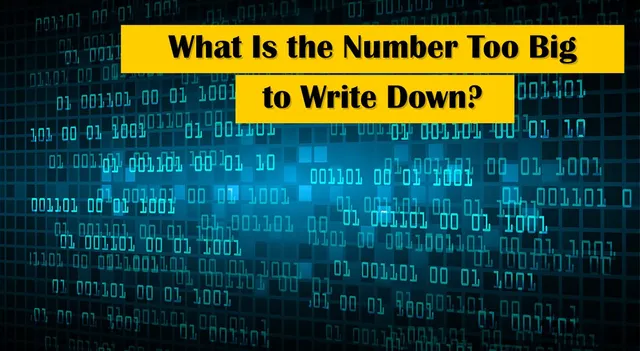- By Ridam Sharma
- Sat, 01 Nov 2025 06:51 PM (IST)
- Source:JND
The Graham Number is a super huge number that was found by a mathematician, Ronald Graham, while solving a math problem. The Graham Number is so large that even when you write it in the smallest letters possible, it will still not be able to fit in the whole universe! This figure is a result of a famous mathematics theory known as Ramsey theory, which examines the patterns in chaos.
Think like this, if you put dots together and join them using a red or blue line. In this situation, as per the Ramsey theory, the question arises, "How many dots do you need to be sure that there are some dots connected with lines of the same colour? Graham was working on a very elaborate version of this.
The Graham Number is used to provide an upper limit in this problem. It informs you that regardless of the problem, if you get a huge number of points, you will certainly come across this pattern. But how huge? Very large by the standards of numbers like a trillion or even a googolplex (which is 10 to the power of 10 to the power of a hundred).
Recommended For You
Also Read: Brain Teaser: Can You Crack This Mind-Bending Math Puzzle? There’s A Twist!
Graham’s Number is too large to be written in regular numbers. It is defined using a special number-writing device known as up-arrow notation, which is a method of writing very large numbers with ease. The number of digits in the Graham Number is so large that we cannot even write that number in its entirety, let alone the points after it.
Despite its size, mathematicians can calculate portions of Graham's Number, like the last few digits of it. It was also in 1991 recorded in the Guinness Book of World Records as the largest number used in a math proof.
Also Read: Put Your Brain To The Test: Solve This Math Puzzle In 15 Seconds-Only A Few Can Get It Right
In short, Graham's Number is a well-known math problem that showcases that numbers can sometimes be so large that they are beyond our imagination of seeing or writing. The Graham Number is used in resolving profound puzzles regarding patterns. It helps solve extremely tough puzzles and things like coloured dots and lines.


-1761934340045_m.webp)


-1761739871797_m.webp)